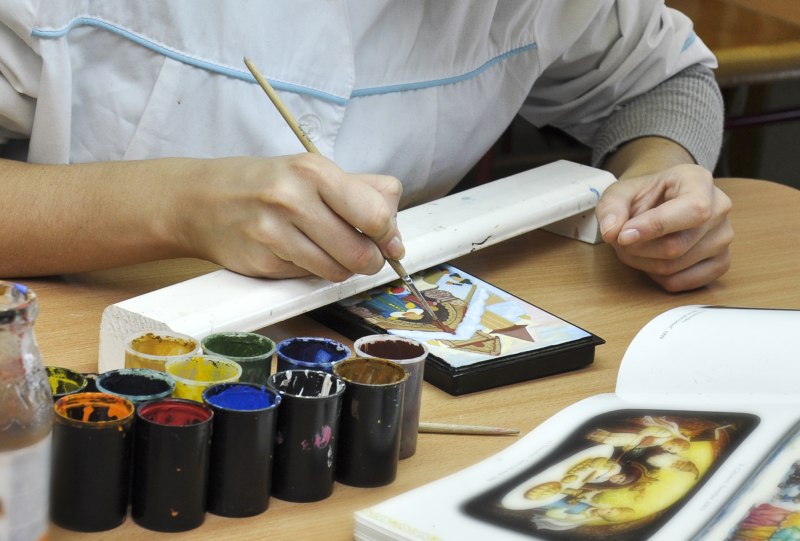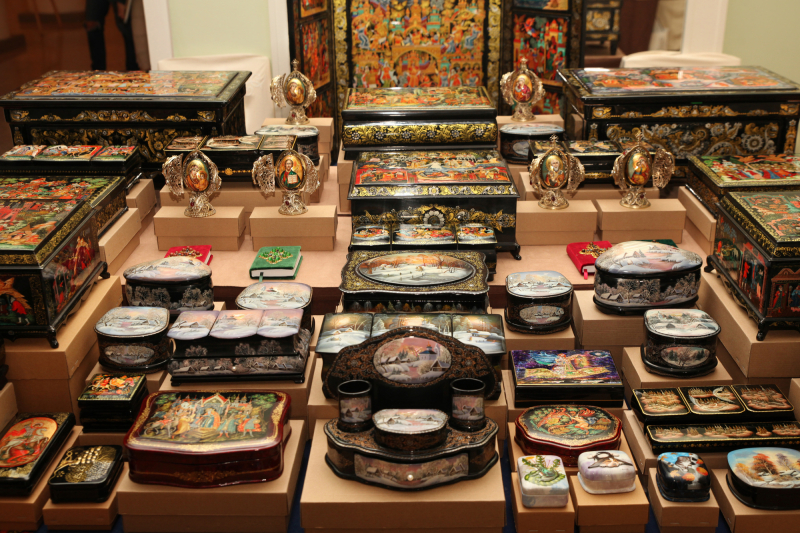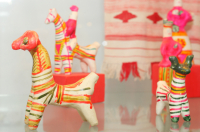If you’ve ever visited a souvenir shop in Russia, your eye was probably caught by small boxes, trays, or other objects painted with bright colors, intricate ornaments, flowers, and other common traditional motifs. That’s what lacquer miniature is, and in Russia, it’s a whole separate craft. To excel at it, artists must study for years. Although this art form in itself is known in many countries, each nation has its own elaborate style, and Russian lacquer artists are no exception.
The history of this craft goes back to the 18th century, when the merchant Pyotr Korobov opened the first lacquer miniature manufacture in the village of Danilkovo (now a part of the village of Fedoskino) near Moscow. Pyotr’s son-in-law inherited the business and it truly flourished under his management. Artists were inspired by famous Russian painters and created jewelry or tobacco boxes, and other accessories covered in pictures that, despite their small size, were pretty much as detailed as big canvases. To preserve them, the craftspeople covered the images with a special lacquer. Fedoskino lacquer miniature remains one of the most famous examples of this art in Russia to this day.
Among other places associated with lacquer miniature are Palekh, Mstyora, and Kholuy. They followed the steps of Fedoskino masters and took up this craft after the Russian Revolution, coming up with their own distinct styles. Before that, artists from these villages were famous for their iconography, but under the new regime, they had to take up an art form that wouldn’t be associated with religion.

Credit: kolessl2807 / photogenica.ru
Palekh masters created their work with papier-mache, like Fedoskino artists did, but they used materials and features common for icon painting. For example, they painted the faces of humans in a similar manner as they would paint a saint and used egg yolk tempera instead of oil paint.
In Mstyora lacquer miniature, you can find more landscape pictures with blue sky (as opposed to Palekh’s all-black background), tiny details, and lush trees. As for Kholuy painting, you can see more ornaments or complex scenes, depicting things that happened at different time periods on one object.
You can find the first part of our story on Russian crafts here. Stay tuned for more!




